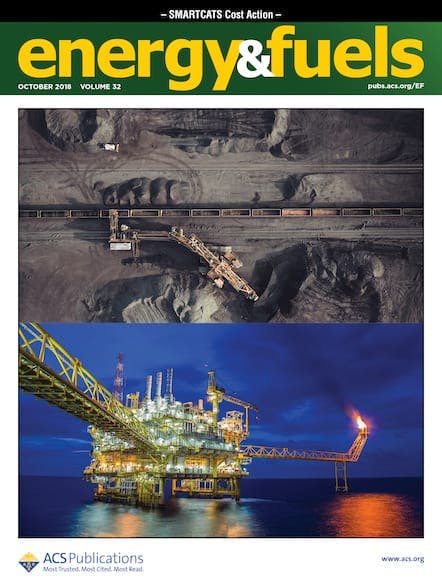The Energy & Fuels Joint Award for Excellence in Publication is a collaboration between the ACS Technical Division of Energy & Fuels and the ACS journal Energy & Fuels, to recognize a notable article that has been published in Energy & Fuels during the previous 5 years. The 2019 Awardee is an article entitled “High-Pressure Methane Adsorption and Characterization of Pores in Posidonia […]


The Energy & Fuels Joint Award for Excellence in Publication is a collaboration between the ACS Technical Division of Energy & Fuels and the ACS journal Energy & Fuels, to recognize a notable article that has been published in Energy & Fuels during the previous 5 years. The 2019 Awardee is an article entitled “High-Pressure Methane Adsorption and Characterization of Pores in Posidonia Shales and Isolated Kerogens” by corresponding author Professor K. Mark Thomas of Newcastle University, and co-authors Thomas F. Rexer, Eliza J. Mathia, and Andrew C. Aplin. Click on the names of each author to read more of their research.
This article reports a thorough study of the physical chemistry and petrology required to estimate the Gas-in-Place and the rate at which that gas can be extracted from a wide-spread, economically important shale formation that lies under Western Europe. In recognition of the award, Professor Thomas will deliver a lecture at the Energy & Fuels Lectureship Symposium at the upcoming ACS Fall 2019 National Meeting & Exposition in San Diego.
An Interview with Professor Thomas
Read this interview with Professor K. Mark Thomas to learn more about the award-winning article, the challenges facing this field of research, and what this award means to him, his co-authors and the research team involved.
What prompted your team to work on this project?
The development of shale gas as a methane resource started in the US and currently accounts for a significant contribution to US gas supplies. The U.K. supplements its own North Sea natural gas resources with pipeline supplies from Norway and Russia. It also imports LNG from the Middle East. A new indigenous resource such as shale gas provides potential for security of natural gas supply. The economic potential of shale gas reservoirs is a function of the Gas-in-Place and the rate at which it can be extracted from the shale. In Europe, shale gas extraction is not well developed and European shales have different characteristics compared with U.S. shales. There is a large potential shale gas resource in the U.K., but much of this is located in fairly densely populated regions. Therefore, in order to justify extraction of shale gas, the potential of the resource needed to be established unequivocally. The big unknowns were the methane capacity of the shale and how this related to shale and kerogen characteristics.
What are the major challenges still facing this field?
At the time we started the project the major questions were 1) the accuracy of the measurements of methane adsorption capacity of shales; 2) the amounts of adsorbed gas and free gas in shale and 3) the relative contributions of the kerogen and mineral phases to overall methane capacity. The problems were essentially related to the very small amounts of methane present in the shale and the need to make accurate high pressure gas sorption measurements under the high pressures and temperatures found in geological reservoirs. The challenges regarding the reproducibility of methane measurements on shales under simulated geological conditions have now been overcome to a large extent through inter-laboratory studies of reproducibility.
Shales are complex heterogeneous materials and the relationships between shale characterization data, and methane adsorption capacity and Gas-in-Place need further investigation to provide a more detailed understanding of the various factors influencing shale methane capacity. Shales have organic kerogen and mineral components, and porosity exists in both these components. The overall porosity of shales varies with the maturity of the kerogen and the minerals in the shales. A more detailed understanding of the contributions of the various components in the heterogeneous shale structure and the amounts stored as adsorbed and compressed gas is required. In addition, the factors which affect the rates at which gas is released from the shale are not well understood.
What are you working on now? What’s next in your research?
Currently we are investigation competitive adsorption in relation to the capture of carbon dioxide from flue gases on porous materials, and applications of porous materials and nanoparticles in electrodes.
What does it mean to your team to be awarded 2018 Energy & Fuels Joint Award for Excellence in Publication?
It was a great surprise and honor for the authors to be recognized by this award. It is not something that we anticipated.
***
Corresponding Author, Professor K. Mark Thomas will present a lecture in honor of the award-winning article at an ACS Division of Energy & Fuels session at the ACS Fall 2019 National Meeting & Exposition in San Diego, CA taking place August 25th-29th, 2019. Energy & Fuels and the ACS Technical Division of Energy & Fuels encourage you to attend the session, and look forward to seeing you there!
